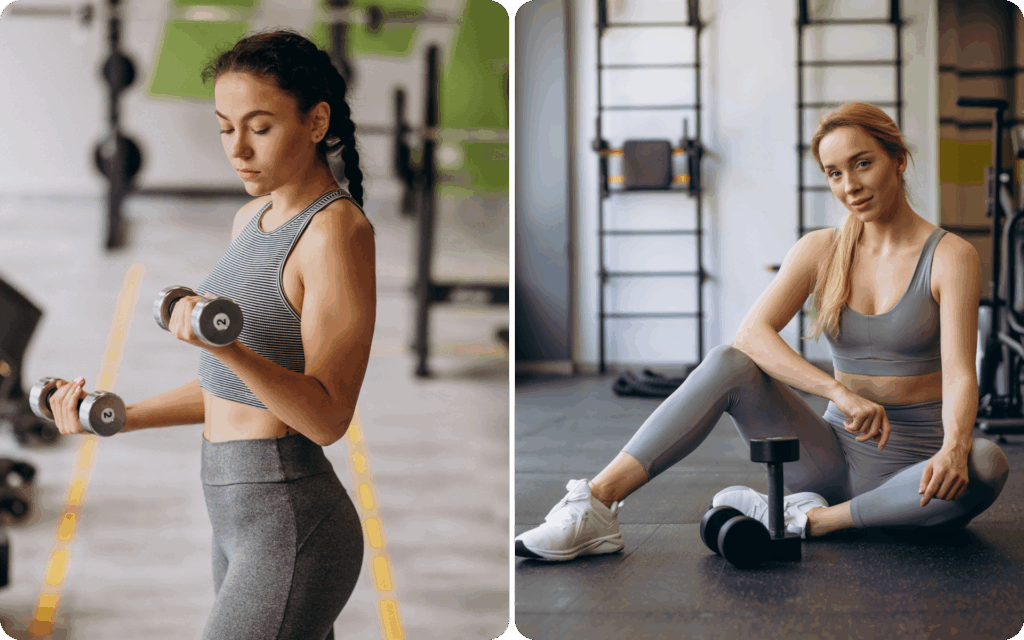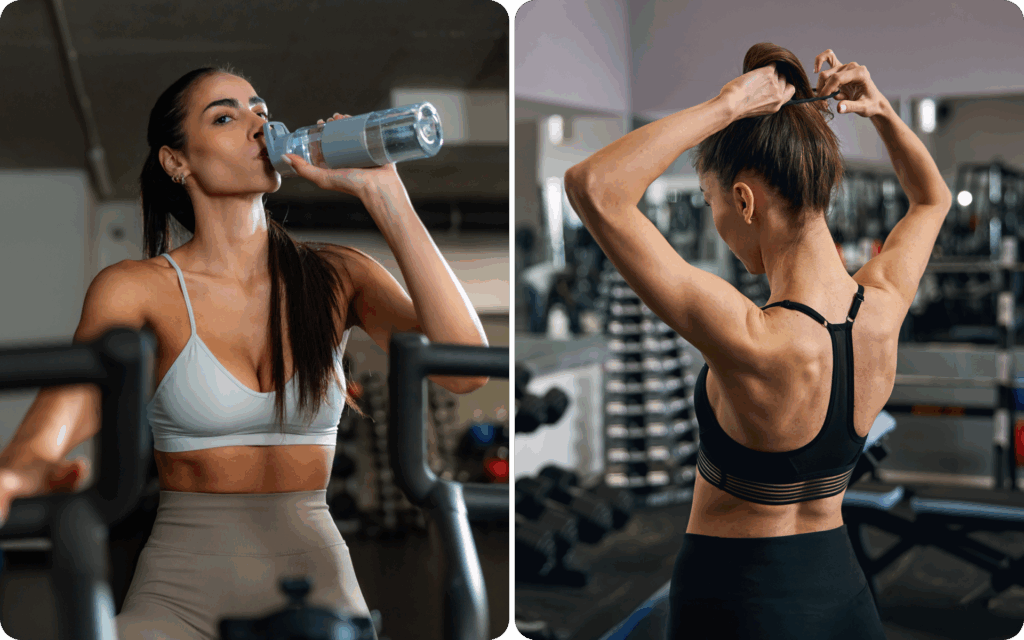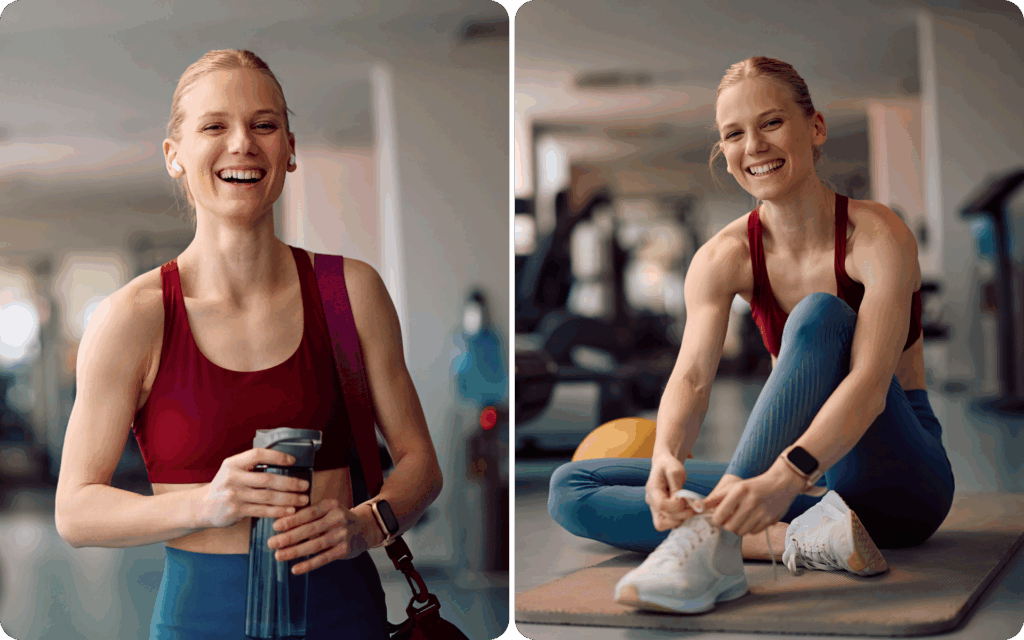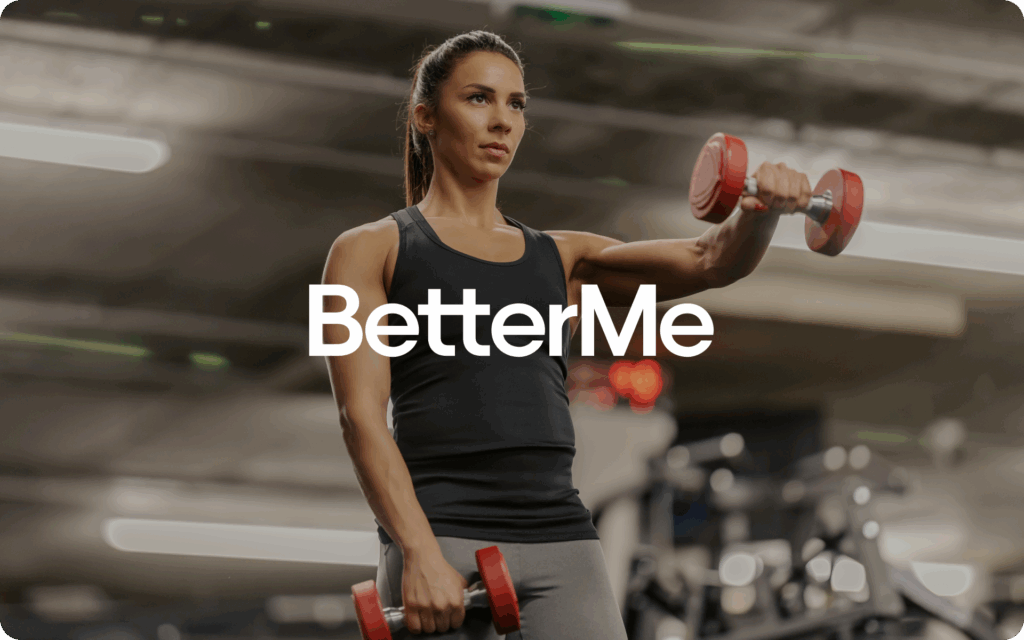Starting a fitness journey can often feel overwhelming. With a sea of conflicting advice, it’s difficult to know where to start or what to trust. This guide cuts through the noise, providing a clear, evidence-based framework for building a workout plan that delivers real results.
We’ll translate cutting-edge exercise science into a practical, step-by-step process. You’ll learn how to structure your week, select the right exercises, and make adjustments for your specific goals – whether that’s building muscle, losing fat, or simply improving your overall health. Let’s build a plan that works for you.
Why Is Building a Workout Plan that Matches Your Goals Important?
A well-structured workout plan is the difference between aimless effort and measurable progress. Without a clear strategy, you risk wasting time on ineffective exercises, facing burnout from overtraining, or losing motivation when you don’t see results. A targeted plan acts as your roadmap, ensuring that every workout moves you closer to your desired outcome.
The primary benefit is efficiency. By aligning your training with your goals, you’ll optimize for specific physiological adaptations.
For example, if your goal is to build a workout plan to build muscle, your program will prioritize resistance training to create the necessary stimulus for hypertrophy (muscle growth). If your goal is fat loss, your plan will balance resistance training with cardiovascular work to maximize energy expenditure while preserving lean muscle mass.
A structured plan also promotes consistency, which is the cornerstone of all long-term fitness achievements. Knowing exactly what to do each day removes the guesswork and decision fatigue that can derail your intentions.
This structured approach helps build a workout plan to match your goals for beginners, as it establishes a routine and fosters sustainable habits.
Finally, a proper plan mitigates injury risk. It ensures you’re not overworking certain muscle groups while neglecting others, leading to imbalances. It also incorporates principles of progressive overload – the gradual increase of stress placed upon the body during exercise – in a safe, manageable way.
Read more: Workout Plan After Long Break: Your Guide to a Smart, Safe Return
How Do I Create a Workout Plan for My Goals?
Creating an effective workout plan involves a systematic approach grounded in exercise science. The key is to combine different training modalities in a way that is aligned with your primary objective. Recent research has clarified how to do this for the general population without creating conflicts between training types.
A 2025 meta-analysis published in Healthcare provides a powerful framework: Concurrent Training (CT). CT is the practice of combining resistance training (RT) and aerobic training (AT) in the same weekly program. For years, a persistent myth suggested that cardio would “cancel out” strength gains – a phenomenon that is called the “interference effect” (1).
However, this extensive analysis of 53 studies concluded that CT is just as effective as standalone aerobic training for reducing body fat and as effective as standalone resistance training for building muscle in middle-aged and older adults. In fact, CT led to greater gains in lean body mass compared to only doing aerobic training. This makes it an ideal, “best of both worlds” approach for most people (1).
Therefore, the foundation of your plan should include both RT and AT. The specific balance, intensity, and volume of each will depend on your goal.
- For Fat Loss: The goal is to create a sustained calorie deficit (2). Your plan will emphasize a combination of resistance training to preserve metabolically active muscle and cardiovascular exercise to increase total daily energy expenditure (TDEE).
- For Muscle Gain: The priority is stimulating muscle protein synthesis through mechanical tension (3). Your plan will be centered around progressive resistance training, with cardiovascular work included for heart health, but programmed to minimize fatigue and support recovery. This is the core of building a workout plan to build muscle.
- For General Health: The aim is a balanced development of strength, cardiovascular fitness, and mobility. The plan will give roughly equal importance to resistance and aerobic training, ensuring that you reap the wide-ranging benefits of both.
Understanding this allows you to move on to the practical steps of structuring your week.
For more information on designing a program that is tailored to your unique needs, explore a custom workout plan.
What Are the 7 Steps to Creating a Workout Plan?
Building a workout plan from scratch can be straightforward if you follow a logical sequence. Here are seven steps to guide you from concept to execution.
1. Define Your Primary Goal
Your primary objective dictates every other decision. Be specific. Instead of “get in shape”, define what that means to you. Is it losing 10 pounds of fat, adding 5 pounds of muscle, or running a 5K without stopping?
- SMART Goals: Make your goal specific, measurable, achievable, relevant, and time-bound.
- Example: “My goal is to increase my squat strength by 20% and lose 2% body fat over the next 12 weeks.”
2. Determine Your Training Frequency
Decide how many days per week you can realistically commit to training. Consistency is more important than intensity. It’s better to consistently train 3 days a week than to aim for 5 and only manage 1 or 2. For most people, 3 to 5 workouts per week is an effective range (4).
3. Select Your Training Split
A training split is how you organize your workouts across the week. Here are a few common and effective options:
- Full-Body Split (3 days/week): You train all the major muscle groups in each session. This is excellent for beginners and those who are focused on general fitness or fat loss, as it maximizes frequency.
- Upper/Lower Split (4 days/week): You alternate between upper-body and lower-body workouts. This allows for more volume per muscle group per session, which makes it a great choice when building a workout plan to build muscle.
- Push/Pull/Legs Split (3-5 days/week): You group muscles by movement pattern: push (chest, shoulders, triceps), pull (back, biceps), and legs. This is a classic split for hypertrophy.
BetterMe: Health Coaching app helps you achieve your body goals with ease and efficiency by helping to choose proper meal plans and effective workouts. Start using our app and you will see good results in a short time.
4. Choose Your Exercises
Focus on compound movements, which work multiple muscle groups simultaneously. They are efficient and provide the most significant hormonal and metabolic response (5). Supplement with isolation exercises to target specific muscles.
- Compound Movements: Squats, deadlifts, bench presses, overhead presses, rows, pull-ups.
- Isolation Movements: Bicep curls, tricep extensions, leg curls, calf raises.
- At-Home Variations: For those who are building a workout plan at home, use bodyweight, resistance bands, or dumbbells. Examples include goblet squats, push-ups, dumbbell rows, and glute bridges.
5. Assign Sets, Reps, and Rest Periods
This is where you tailor the workout to your specific goal.
- For Strength: Focus on lower rep ranges (e.g. 3-6 reps per set) with heavier weights and longer rest periods (2-5 minutes) (6).
- For Hypertrophy (Muscle Growth): Use a moderate rep range (e.g. 6-12 reps per set) with moderate-to-heavy weights and shorter rest periods (60-90 seconds) (6).
- For Muscular Endurance: Employ higher rep ranges (e.g.,15-20+ reps per set) with lighter weights and very short rest periods (30-60 seconds) (6).
A key principle is training with intensity. Aim to finish each set with 1-2 repetitions in reserve (RIR). This means you could have done 1-2 more reps with good form, but chose to stop.
6. Integrate Cardiovascular Training
Based on the concurrent training model, integrate 2-3 cardio sessions per week.
- Moderate-Intensity Continuous Training (MICT): 30-45 minutes at a conversational pace (RPE 5-6/10, or about 64-76% of your max heart rate). This builds your aerobic base (7).
- High-Intensity Interval Training (HIIT): Shorter sessions involving bursts of near-maximal effort followed by rest. For example, 8 rounds of 30 seconds of sprinting followed by 90 seconds of walking. A 2024 network meta-analysis in the Journal of Exercise Science & Fitness found that pairing HIIT running with resistance training was most effective at preserving lower-body strength and muscle size (8).
To minimize interference, perform resistance training before cardio if done in the same session, or schedule them on separate days.
7. Plan for Progression and Recovery
Your body adapts, so your plan must evolve.
- Progressive Overload: Each week, aim to do a little more. This could mean lifting slightly heavier weight, performing one more rep, or adding an extra set (9). Track your workouts to ensure you’re progressing.
- Recovery: Include at least 1-2 full rest days per week. Prioritize sleep (7-9 hours per night) and proper nutrition, as this is when your body repairs and builds muscle (10).
- Deload Weeks: Every 4-8 weeks, plan a “deload” week where you reduce your training volume and intensity by about 40-50%. This will help prevent burnout and reduce accumulated fatigue, allowing for long-term progress (11).
Stretching is often thought of as a recovery tool, but a 2025 Delphi consensus statement from international experts clarified its role. It concluded that stretching does not significantly speed up post-exercise recovery or prevent overall injuries. Its primary benefit is to increase range of motion (12). Use it for that purpose, but prioritize sleep and nutrition for recovery.
If you’re unsure how to apply these steps, discover more about how to make a workout plan.
How Many Days a Week Should I Work Out?
The ideal number of workout days per week depends on your goals, experience level, and ability to recover. There’s no one-size-fits-all answer, but we can establish clear, research-backed guidelines.
A good starting point for most people is 3 to 5 days per week.
- 3 Days Per Week: This frequency is highly effective for beginners and those with busy schedules. A full-body routine is ideal here, as it ensures you stimulate all major muscle groups multiple times per week, which is essential for both strength and muscle growth. A sample week could be strength (Monday), cardio (Wednesday), and strength (Friday).
- 4 Days Per Week: This frequency allows for more specialization and volume. An upper/lower split works perfectly. You can dedicate two days to your upper body and two to your lower body. This split allows for greater focus on specific muscle groups each session and provides ample recovery time.
- 5 Days Per Week: This is typically for intermediate to advanced trainees focused on maximizing muscle hypertrophy or performance. A push/pull/legs split is common. This higher frequency requires careful attention to recovery, including nutrition, sleep, and stress management, to avoid overtraining.
Reasons why BetterMe is a safe bet: a wide range of calorie-blasting workouts, finger-licking recipes, 24/7 support, challenges that’ll keep you on your best game, and that just scratches the surface! Start using our app and watch the magic happen.
What does the science say about training volume?
For muscle growth, the effective dose of resistance training seems to be between 10-20 hard sets per muscle group per week (13). A “hard set” is one that is taken close to muscular failure (about 1-3 RIR). You can achieve this volume across any of the frequencies listed above.
For example, to get 12 sets for your chest:
- 3-day full-body: 4 sets of a chest exercise in each of the 3 sessions.
- 4-day upper/lower: 6 sets of chest exercises in each of the 2 upper-body sessions.
When building a workout plan for beginners, starting with 3 days per week is recommended. It builds the habit of consistency without overwhelming your body’s recovery capacities (14). As you adapt and your fitness improves, you can gradually increase your training frequency.
Read more: 30-Day Full-Body Workout Plan for Strength and Hypertrophy
How Long Does It Take to Get in Shape?
This is one of the most common questions in fitness, and the answer is: it depends on your definition of “in shape”, your starting point, and your consistency. However, we can provide a realistic, quantified timeline based on typical physiological adaptations.
The First 4-8 Weeks: Neurological Gains
When you start a new training program, the most immediate changes are neurological, not muscular. Your brain becomes more efficient at recruiting muscle fibers and coordinating movements (15).
- What you’ll feel: You’ll feel stronger and more coordinated. Lifts that felt awkward will become smoother. You may see a rapid increase in the weight you can lift.
- Visible changes: Minimal visible muscle growth or fat loss, but you may notice reduced bloating and improved posture.
This initial phase is crucial for building a workout plan to match your goals for beginners, as it lays the foundation for future progress.
The First 3-6 Months: Visible Changes
After the initial neural adaptation phase, you’ll start to see noticeable changes in your body composition.
- Muscle Growth (Hypertrophy): Measurable increases in muscle size typically become apparent after 6-10 weeks of consistent resistance training. A realistic rate of muscle gain for a beginner is approximately 1-1.2 pounds per month under optimal conditions (training, nutrition, and recovery) (16).
- Fat Loss: A safe and sustainable rate of fat loss is 0.5-1% of your body weight per week (17). For a 200-pound individual, this is 1-2 pounds per week. Over 3 months, this could equate to 12-24 pounds of fat lost.
- Cardiovascular Fitness: Improvements in VO2 max (a key marker of heart health) can be seen in as little as 2-4 weeks, with significant improvements over 3 months. You’ll notice you can exercise for longer without getting out of breath (18).
6+ Months: Lasting Transformation
This is where your consistency truly pays off, and your results compound.
- Lifestyle Integration: By this point, training is a habit. You have a deeper understanding of your body and how to manage your nutrition and recovery.
- Advanced Progress: The rate of progress will slow down – this is normal. You’ll need to use more advanced techniques (such as periodization) to continue making gains.
- Body Composition: You’ll have made a significant transformation in your physique, with noticeably more muscle and less body fat.
So, can you transform your body in 3 months? You can make substantial, visible progress. But a true, life-altering transformation is a product of 6-12 months or more of dedicated effort.
Are There Solid Tools to Help Build a Workout Plan?
Yes, technology has made it easier than ever to create, track, and adhere to a workout plan. While nothing replaces the guidance of a qualified coach, several tools can provide structure and motivation, particularly for those who are building a workout plan at home.
A high-quality workout application can serve as a digital training partner. The best apps, particularly BetterMe: Health Coaching, go beyond simply listing exercises. They incorporate the principles discussed in this guide, such as progressive overload, periodization, and customization based on your goals and equipment.
Look for apps that offer:
- Customizable Plans: The ability to adjust your plan based on your goals (muscle gain, fat loss), schedule, and available equipment.
- Progress Tracking: Tools to log your weights, reps, and sets, so you can easily apply progressive overload. Many also track body measurements and progress photos.
- Exercise Library with Demonstrations: Clear video demonstrations with form cues are essential for performing movements safely and effectively, particularly for beginners.
- Structured Progression: The app should automatically adjust your workouts over time to ensure you continue to make progress, often suggesting when to increase weight or change exercises.
These tools are particularly useful for anyone who is building a workout plan for beginners, as they provide the structure and guidance needed to build confidence in the gym or at home.
For male users who are looking for a comprehensive tool, consider exploring a top-rated workout app for men.
Muscles that are used frequently in daily life and respond quickly to training are often the “easiest” to develop. These include the quadriceps, glutes, biceps, and shoulders (deltoids). As they contain a mix of fiber types and are involved in many compound movements, they tend to show definition relatively quickly with consistent training (19). You can make significant and visible progress in 3 months, but a complete “transformation” will depend on your starting point and goals. A beginner can expect to lose 10-20 pounds of fat and gain several pounds of muscle in this timeframe with disciplined training and nutrition. While your body will look and feel dramatically different, think of it as the first major milestone in a longer journey. The routine that burns the most fat is one that creates the largest sustainable calorie deficit. This is best achieved through a combination of resistance training and cardiovascular exercise. Resistance training builds and maintains muscle, which elevates your resting metabolic rate, while cardio (particularly HIIT) burns a significant number of calories during and after the session. There is no single “best” routine, but concurrent training is the most effective strategy overall. For most people, it isn’t inherently bad to work out on an empty stomach, particularly for low-to-moderate intensity cardio. This is often called “fasted cardio”. However, for high-intensity training or heavy resistance lifting, performance may be compromised. The body’s preferred fuel source for intense activity is carbohydrates, and a lack of available glycogen may lead to premature fatigue. Listen to your body – if you feel weak or dizzy, a small, easily digestible snack (like a banana) 30-60 minutes before your workout is a good idea.Frequently Asked Questions
What muscles are easiest to tone?
Can I transform my body in 3 months?
What workout routine burns the most fat?
Is it bad to work out on an empty stomach?
The Bottom Line
Building an effective workout plan isn’t about finding a magic formula, it’s about applying proven scientific principles with consistency. By integrating both resistance and aerobic training, you’ll create a powerful synergy that optimizes health, body composition, and performance.
Remember to define your goals, choose your exercises wisely, and prioritize progressive overload and recovery. Armed with this knowledge, you have the blueprint to stop guessing and start building – creating a stronger, healthier, and more resilient version of yourself, one workout at a time.
DISCLAIMER:
This article is intended for general informational purposes only and does not serve to address individual circumstances. It is not a substitute for professional advice or help and should not be relied on for making any kind of decision-making. Any action taken as a direct or indirect result of the information in this article is entirely at your own risk and is your sole responsibility.
BetterMe, its content staff, and its medical advisors accept no responsibility for inaccuracies, errors, misstatements, inconsistencies, or omissions and specifically disclaim any liability, loss or risk, personal, professional or otherwise, which may be incurred as a consequence, directly or indirectly, of the use and/or application of any content.
You should always seek the advice of your physician or other qualified health provider with any questions you may have regarding a medical condition or your specific situation. Never disregard professional medical advice or delay seeking it because of BetterMe content. If you suspect or think you may have a medical emergency, call your doctor.
SOURCES:
- Comparison of concurrent, resistance, or aerobic training on body fat loss: a systematic review and meta-analysis (2025, tandfonline.com)
- Fat Loss Depends on Energy Deficit Only, Independently of the Method for Weight Loss (2007, karger.com)
- Anabolic signals and muscle hypertrophy – Significance for strength training in sports medicine (2025, sciencedirect.com)
- How Often Should You Work Out? (2023, health.clevelandclinic.org)
- 5 Benefits of Compound Exercises (2016, acefitness.org)
- Loading Recommendations for Muscle Strength, Hypertrophy, and Local Endurance: A Re-Examination of the Repetition Continuum (2021, mdpi.com)
- Effects of high-intensity interval training and moderate-intensity continuous training on mitochondrial dynamics in human skeletal muscle (2025, frontiersin.org)
- Comparative efficacy of concurrent training types on lower limb strength and muscular hypertrophy: A systematic review and network meta-analysis (2024, sciencedirect.com)
- Effects of Resistance Training Overload Progression Protocols on Strength and Muscle Mass (2024, pubmed.ncbi.nlm.nih.gov)
- THE IMPORTANCE OF SLEEP FOR PERFORMANCE AND RECOVERY (2020, hprc-online.org)
- Integrating Deloading into Strength and Physique Sports Training Programmes: An International Delphi Consensus Approach (2023, sportsmedicine-open.springeropen.com)
- How effective is stretching for injury prevention? A large-scale systematic review with meta-analysis (2025, researchgate.net)
- A Systematic Review of The Effects of Different Resistance Training Volumes on Muscle Hypertrophy (2022, pmc.ncbi.nlm.nih.gov)
- Determination of Resistance Training Frequency (2017, nsca.com)
- Neuromuscular adaptations to resistance training in elite versus recreational athletes (2025, frontiersin.org)
- Increasing Lean Mass and Strength: A Comparison of High Frequency Strength Training to Lower Frequency Strength Training (2016, pmc.ncbi.nlm.nih.gov)
- Rate of weight loss can be predicted by patient characteristics and intervention strategies (2013, pmc.ncbi.nlm.nih.gov)
- Adaptations to Endurance and Strength Training (2018, pmc.ncbi.nlm.nih.gov)
- The Role of Fiber Types in Muscle Hypertrophy Implications for Loading Strategies (2014, journals.lww.com)















